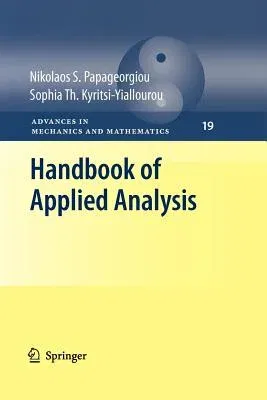Accurate models to describe real-world phenomena are indispensable for
research in such scientific fields as physics, engineering, biology,
chemistry, and economics. The tools and techniques of applied analysis
facilitate the development of mathematical models and can thereby serve
as an excellent resource for students and researchers in various
scientific and mathematical disciplines.
This self-contained, comprehensive handbook provides an in-depth
examination of important theoretical methods and procedures in applied
analysis.
Unique features of the Handbook of Applied Analysis:
- Presents an accessible introduction to modern analysis, while still
serving as a useful reference for researchers and practitioners;
- Covers a large number of diverse topics: smooth and nonsmooth
differential calculus, optimal control, fixed point theory, critical
point theory, linear and nonlinear eigenvalue problems, nonlinear
boundary value problems, set-valued analysis, game theory, stochastic
analysis, and evolutionary equations;
- Serves as a complete guide to the theory of nonlinear analysis;
- Includes numerous examples that demonstrate and expand upon the
topics presented;
- Suggests many directions for further research and study.
In this one volume, the reader can find many of the most important
theoretical trends in nonlinear analysis and applications to different
fields. These features, together with an extensive bibliography, make
the volume a valuable tool for every researcher working on nonlinear
analysis.


